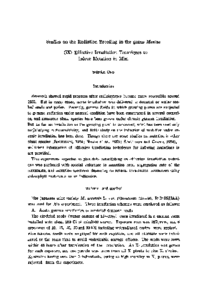

Scientific Reports of the Faculty of Agriculture, Okayama University
Published by the Faculty of Agriculture, Okayama UniversityONLINE ISSN : 2186-7755
Permalink : https://ousar.lib.okayama-u.ac.jp/282
放射線によるハッカ属植物の育種学的基礎研究 (第9報)ハッカの突然変異誘発に有効な放射線照射方法に関する研究
Ono, Seiroku
Published Date
1971
Abstract
1) The irradiation techniques to induce mutations in mint effectively were checked using chlorophyll mutants as an indicator after acute irradiation of air-dried dormant seeds, and after chronic irradiation of developing a seeds and growing buds. 2) In acute irradiation of dormant seeds, the low mutation rate and the saturation effect of the mutations at high exposure were observed showing less effectiveness of the dormant seeds irradiation. 3) In chronic irradiation of growing plants, the mutation rate per R unit was nearly constant and neither threshold exposure nor saturation effect of the mutations was observed. 4) In irradiation of developing seeds, only limited exposure may be delivered owing to severe radiation damage ; the actual number of mutants was low in comparison with those of the developing bud irradiation. 5) For increasing the number of the mutants in the X2 generation, irradiation of the developing buds was the most effective ; irradiation of the developing seeds was less effectve; and irradiation of the dormant seeds resulted in the lowest rate of mutation.
Keywords
ハッカ属植物
育種学
突然変異誘発
放射線照射方法
ISSN
0474-0254
NCID
AN00033029
